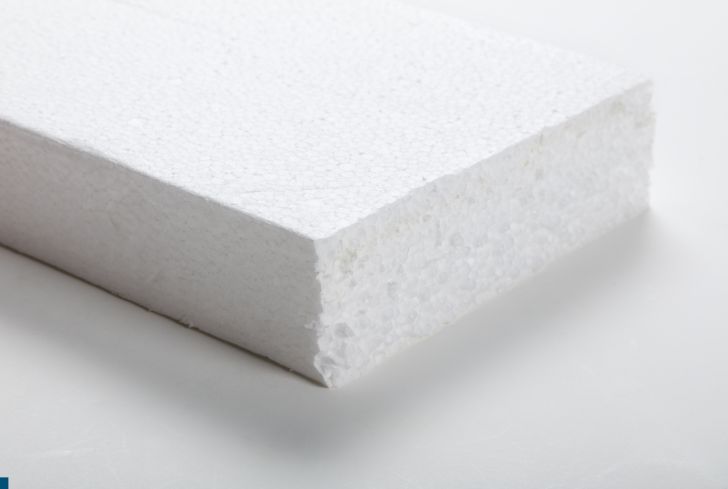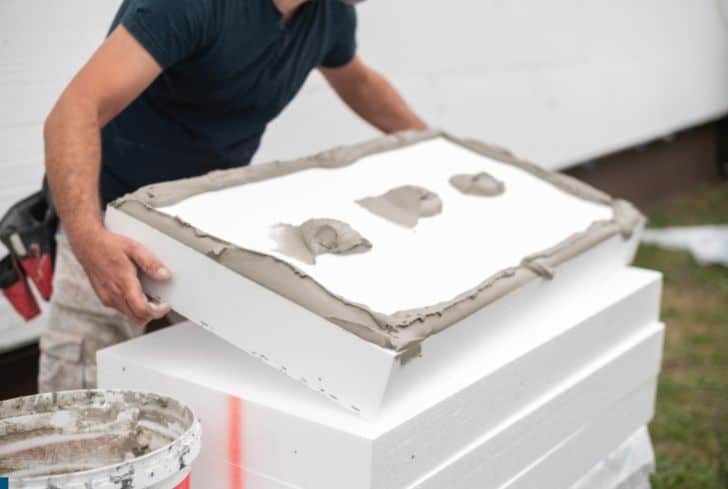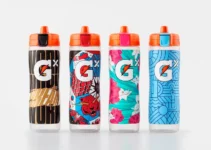Glossy or matte, a foam board can be a sight to behold. It is a popular material for displaying graphics or print for social events, art or trade shows, props, and even interior decoration.
A Foam board is a lifesaver when you need to plan an occasion. It is cheap, easily accessible, and available in varieties. Fancy DIYs? These do-alone projects are becoming even more popular, as these DIY fun facts indicate. Many woodworkers agree that foam board is ideal for wood projects around the home.
Well enough with the praises or uses of foam board, and let’s skip to the environmental effects. Can foam board be recycled? Is it biodegradable? How can you dispose of it without harming biodiversity or the ecosystem? We’ve got the answers, so keep reading!
What is Foam Board?
It is also known as a foam core board, and it is a sturdy material that is made of polyurethane or polystyrene. Cotton archival paper, brown Kraft paper, or white clay-coated paper often encases both sides of it, creating a triple-layered structure that you can use for various applications. The best thing about foam board is the ease you can carve into and design it.
Architects, artists, photographers, and crafters use foam boards. It comes in glossy or matte options that can help improve the aesthetics of your project. What is not to love about foam board?
This material is lightweight, making it excellent for designers, prop specialists, and model crafters. It is also great for menu boards, lobby decorations, science fair projects, advert boards, small signboards that you use at the airport, and pretty much anything that requires an inscription or a visual display. You can also use it for insulation.
The typical foam board has three layers. In the middle is a sheet of polystyrene or polyurethane covered by an outer layer that is either glossy or matte. You can choose depending on the project you are working on.
Some external layers are made of aluminum or styrene for extra protection. There are also fire-resistant external layers.
Foam board is water-resistant, with your best options being extruded polystyrene or plastic options, best for projects that involve moisture. You can print on foam board and carry out other artsy projects on it.
When choosing the ideal foam board for your desired project, your options include heavy-duty, smooth, modeling board, self-adhesive, digital prints, bright white, and heat-activated foam boards.
Anyone can use foam boards, but it is more popular among DIYers, woodworkers, and creatives.
Can Foam Board be Recycled?
Yes, but it depends on where you reside. In countries like Canada and the US, the possibility of recycling foam boards increases. If you live in one of the states in this country, you can use your recycling locator to find the nearest recycling center that accepts this waste product.
The process of recycling foam boards is called densification. Many countries avoid recycling foam boards or other foam products because of the massive weight reduction from compressing these items.
Densification entails compressing a product so that the air pockets disappear and a log-like result forms. This dramatically reduces the size and, therefore, the profits.
To make good gains from recycling items like foam boards, a recycling center must recycle plenty of them. Therefore, finding a recycling center that accepts foam boards may be tricky, but you can use a recycling center locator to find it.
It is also worth mentioning that not all types of foam boards can be recycled.
You can easily recycle it if it is made from polystyrene, which can be expanded or extruded. Polyethylene is also another type of foam that you can recycle.
Polyethylene is more commonly used as a packaging material for shipping. This means there are popular use-cases for it, increasing the recycling centers’ profits. You can also recycle polyurethane foam.
This can be done by regrinding; here, the recycling machine obliterates the foam into powder used to create more products. The other option is to shred the foam into pieces, then realign them for newer foam products.
Can I Put Foam in My Recycle Bin?
This decision may vary from one recycling center to another and from one country or county to another. It is more profit-oriented than any other reason, though. Foam is a lightweight material that does not accrue much profit at the end of the day, and no one wants to run a business that’s not profitable.
Typically, you can recycle foam, but not every type and not in every country. It is simply more challenging to recycle this type of material; it causes more stress for recycling centers to gather the foam and recycle it than it does other substances.
You can put foam in your recycle bin depending on the region you reside and your country’s recycling laws. But note that foam products, especially those that have been in contact with food, ate more challenging to recycle. If anything, most recycling centers turn away food waste containers made from foam.
Therefore, you may be unable to put foam in the recycle bin. Instead, you can resort to creative ways to dispose of it, such as upcycling. You can do many fun artsy projects with old foam boards or other foam waste items.
Alternatively, you can put it in the trash can. It will end up in landfills and negatively impact the environment, but we will have to make do until better recycling methods are developed.

Is Elmer’s Foam Board Recyclable?
Yes, Elmer’s foam board is recyclable. It is made from polystyrene, a plastic substance realized from polymerization. Polystyrene is one of the more acceptable foam waste products at the recycling center, but you should make inquiries beforehand.
There are two types of polystyrene foam. We have expanded polystyrene foam, or EPS, and extruded polystyrene foam, or XPS.
Expanded polystyrene foam has tiny air pockets that are bonded together. It is popularly used for packaging items or manufacturing disposable cups for beverages. You may know it as Styrofoam, and you can identify it from its white or transparent surface.
Styrofoam is famous for craft items like foam boards. In addition, it makes insulation better, providing a win-win situation for everyday DIY projects in any field.
On the other hand, expanded polystyrene foam has a closed-cell structure and is more rigid than expanded polystyrene foam.
Needless to say, both options work for foam boards, and that is what Elmer’s uses. They are recyclable and should be accepted by the average recycling center. But again, it is best to make your inquiries before taking the old foam board to your local recycling center or putting it in the recycling bin.
We recommend using a recycling locator; if you discover your local recycling center does not accept old foam boards, the internet can show you the nearest place to get it done.
If that bothers you, you can keep reading for upcycling alternatives.
Is Foam Board Biodegradable?
Foam board is biodegradable, but it takes many years for that to happen. There are two types of foam boards when talking about biodegradability. Some have been manufactured with an emphasis on sustainability and a friendly environmental impact. Those can break down in one to five years.
On the other hand, the more conventional foam board may last up to 450 years before decomposing.
The primary material used to make foam boards is plastic, XPS, or EPS. There are also polyurethane and polyethylene foam boards, which you should recycle instead of throwing in the trash can. Otherwise, they will end up in landfills and sit there for long years.
This is because plastic is not biodegradable in the sense of it. A biodegradable material requires work from microbes like yeast, fungi, and bacteria, but these microorganisms must also gain from the breakdown process. There are no organic resources in foam board because it is plastic-based, so biodegradation occurs differently.
If anything, we might say it does not biodegrade but rather degrades. This will take a while; the environment is left with microplastics that stick around forever when it finally happens.
Can you Paint Foam Board?
It depends; you should be able to paint foam board, but not every type. For instance, if you use a clay-coated foam board, it may not accept some types of paint. The best technique to adopt when you want to improve the outlook of foam board by painting it is to use spray paint.
Stick with acrylic paint because this is the best substance that holds well on the surface.
You cannot use oil-based paint because it dries too slowly. It releases toxic chemicals into the foam board that may alter its structure or appearance. And lastly, when oil-based paint dries, it will increase the chances that it will peel off.
Acrylic is the best choice compared to the other types of paint. It dries fast and adheres well to the surface, but it is best to sand it down before applying the paint.
If you don’t use spray paint, you can use a dry brush to apply paint to the surface carefully. Don’t mind going over the foam board multiple times until you get the desired color and consistency you want.
What Can I Do with the Old Foam Board?
What can you do with old foam board:
1. Stuffing and packaging
Let’s say you can extract the softer parts of the old foam board. Use them for stuffing and packaging since the inner layer of a foam board is essentially Styrofoam.
2. Plant Filler
This is where you extract the softer area of the foam board and hack it into pieces. Use them as a plant filler – place them at the bottom of your pot before filling them with soil.
3. Shoe Sole Padding
Need a fast improvisation idea for shoes that don’t fit well enough? Try the softer part of the foam board, which you can extract from the outer layers. Fit it into your shoes until you find the time for a proper shoe filler.
4. Palette
There are many ways to spend less on your hobbies, and upcycling is one of them. Save a few bucks by turning your old foam board into a palette for crafts. The board is waterproof, so you can wash and rewash it with each use.
5. Drying Board
Your old foam board can also be a drying board for vegetables, fruits, and seeds. If you haven’t spray-painted or applied any chemicals to the surface, you can upcycle it into a chopping board.
Conclusion
Foam board is recyclable, but you should confirm from your local recycling center first. Ask for instructions on recycling it before bringing it to the recycling machine. You can also use a recycling locator or opt for one of the crafty options we have explored in this blog post.






